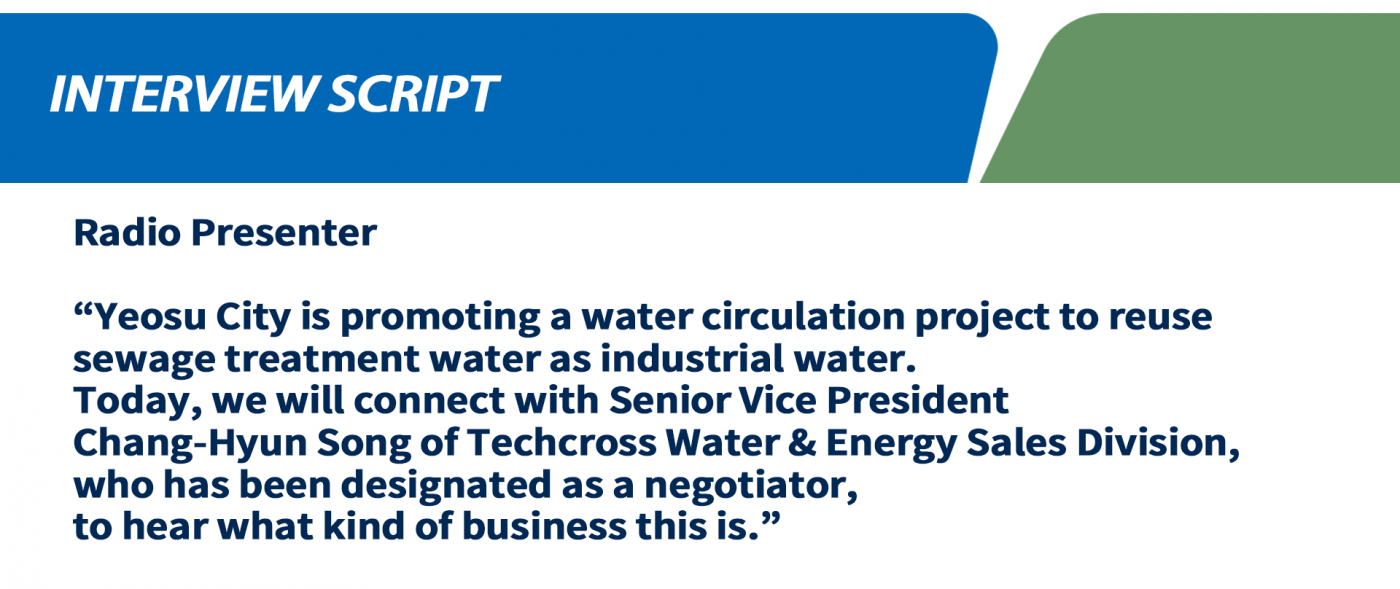|
NEWS
[INTERVIEW] “water circulation project to reuse sewage treatment water as industrial water” (KBS Suncheon November 3, 2021)
2021-11-03
|
|---|
|
Q. Please explain the sewage treatment water reuse project. A. When sewage from households is treated at a sewage
treatment plant, there is an effluent that is discharged into a river or the
sea. In the sewage treatment reuse business, this effluent is filtered or
rectified and supplied to industrial complexes and companies as industrial
water. It can be said that we’re killing two birds with one stone as we improve
the water quality of the discharged water and also solve the shortage of
industrial water in the Yeosu National Industrial Complex by recycling water
once used and discarded.
Q. How is sewage treated water reused? A. Sewage treated water passes through a filter called a
membrane during the treatment process. In this process, pollutants contained in
the treated water are separated and removed, and the water is recycled to
provide high quality reuse water. In particular, the reverse osmotic membrane
applied to this project process is a highly responsive technology to changes in
pollutants that can separate ionic components and maintain good water quality
stably with stability even when used for a long time.
Q. So, in the case of Yeosu City, how much of the
treated sewage water is being dumped into the sea? A. Well
currently, Yeosu City's public sewage treatment facility discharges about
70,000 tons of water into the sea per day.
Q. So, to what extent can this wastewater be recycled if reused? A. We plan to bring about 70,000 tons of effluent to the
sewage treatment water reuse facility. We will then filter and rectify it, and
supply 50,000 tons to customers, and reprocess the remaining 20,000 tons before
discharging it. As a percentage, it seems to be around 70% or more.
Q. Above all, the problem of industrial water can be solved, right? A: That’s right. Not only in Yeosu, but also areas where
major industrial complexes are located are in danger of water shortages due to
increased industrial water use by companies. In this situation, I think the
sewage reuse project can be an alternative.
Q. It is planned to be completed by 2024. What differentiates it from
the existing water treatment plant for sewage treatment water reuse facilities? A. Existing water treatment facilities have not been
able to handle minute pollutants in the process of simply using chemicals. This
sewage treatment facility introduces reverse osmosis membranes to the process
to effectively filter out very fine pollutants that cannot be treated with
chemicals, producing high-quality water that cannot be compared to the existing
industrial water quality.
Q. What are your plans for the future? A: Techcross Water & Energy aims to be the No. 1
environmental company that contributes to humanity and the environment. In
addition to recycling, we are expanding our business to include more advanced
wastewater reuse projects and other waste-to-energy projects. We are already
operating or constructing sewage treatment facilities in the three areas of
Paju, Cheongju, and Yeosu. We will continue to grow into a company that can
preserve the environment and contribute to the competitiveness of customers
through technology development.
|





